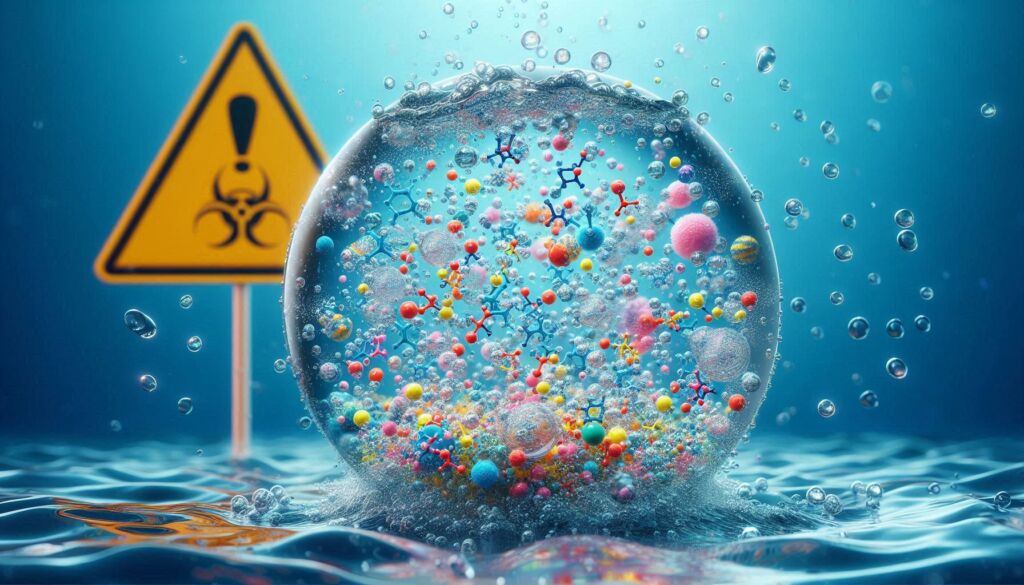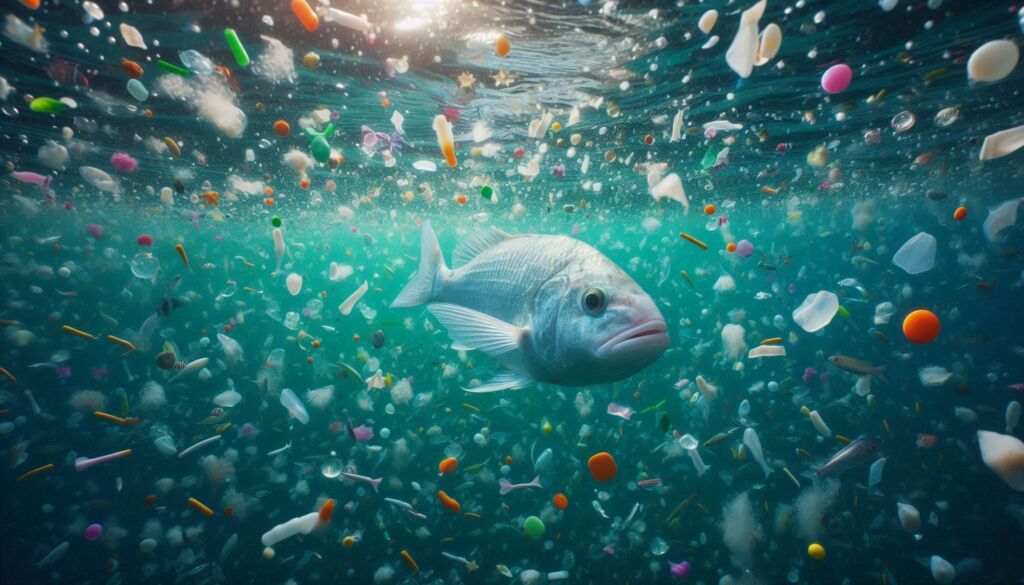
A new study shows that the combined impact of so-called ‘forever chemicals’ is more harmful to the environment than single chemicals in isolation. Researchers at the University of Birmingham have investigated the environmental effects of microplastics and PFAS and established their harmful effects on aquatic life.
Microplastics are tiny plastic particles that come from plastic bottles, packaging, and clothing fibres. PFAS (Per- and Polyfluoroalkyl Substances) are a group of chemicals used in everyday items like non-stick cookware, water-resistant clothing, firefighting foams, and numerous industrial products.
PFAS and microplastic are known as “forever chemicals” because they don’t break down easily and can build up in the environment, leading to potential risks for both wildlife and humans.
Both PFAS and microplastics can be transported through water systems on long distances, all the way to the Arctic. They are often released together from consumer products. Yet, their combined effects, and also the ways in which they interact with other polluting compounds in the environment, remain poorly understood.

To better understand the combined impact of these pollutants, researchers used Daphnia, commonly known as water fleas. These tiny creatures are often used to monitor pollution levels because they are highly sensitive to chemicals, making them ideal for determining safe chemical limits in the environment.
In this study, published in Environmental Pollution, the team compared two groups of water fleas: one that had never been exposed to chemicals and another that had experienced chemical pollution in the past.
This unique approach was possible thanks to Daphnia’s ability to remain dormant for long periods, allowing researchers to “resurrect” older populations with different pollution histories.
Both groups of Daphnia were exposed for their entire life cycle to a mixture of microplastics of irregular shapes – reflecting natural conditions- together with two PFAS chemicals at levels typically found in lakes.
The team showed that PFAS and microplastics together caused more severe toxic effects than each chemical alone. The most worrying result was developmental failures, observed together with delayed sexual maturity and stunted growth. When combined, the chemicals caused Daphnia to abort their eggs and produce fewer offspring.
These effects were more severe in Daphnia historically exposed to pollutants, making them less tolerant to the tested forever chemicals.
Importantly, the study found that the two chemicals caused greater harm when combined—59% additive and 41% synergistic interactions were observed across critical fitness traits, such as survival, reproduction, and growth.
Lead researcher Professor Luisa Orsini emphasised the importance of the findings: “Understanding the chronic, long-term effects of chemical mixtures is crucial, especially when considering that previous exposures to other chemicals and environmental threats may weaken organisms’ ability to tolerate novel chemical pollution.
“Our research paves the way for future studies on how PFAS chemicals affect gene function, providing crucial insights into their long-term biological impacts. These findings will be relevant not only to aquatic species but also to humans, highlighting the urgent need for regulatory frameworks that address the unintended combinations of pollutants in the environment. Regulating chemical mixtures is a critical challenge for protecting our water systems.”
Dr Mohamed Abdallah, co-leading the research, said, “Current regulatory frameworks focus on testing the toxicity of individual chemicals, mostly using acute (short) exposure approaches. It is imperative that we investigate the combined impacts of pollutants on wildlife throughout their lifecycle to get a better understanding of the risk posed by these pollutants under real-life conditions. This is crucial to drive conservation efforts and inform policy on facing the growing threat of emerging contaminants such as forever chemicals.”
Novel tools in chemical and biological screening with advances in artificial intelligence mean that we can understand the complex interactions among chemicals in the environment. Revising current methods for assessing environmental toxicity is therefore not only possible but imperative.”

![]()




You must be logged in to post a comment.